PART I.
HISTORICAL INTRODUCTION
--- AND ----
Description of Centennial Celebration.
HAMILTON, OHIO,

Historical Introduction.
By JOHN F. NEILAN.
THE, defeat of the Indians by General Wayne in 1794, may truthfully be said to be one of the most important battles ever fought on American soil. Had he suffered such a defeat as did General St. Clair three years before, the consequences might, and doubtless would, have changed the map and the entire subsequent history of this country. All that magnificent territory, now embraced in the states of Ohio, Indiana, Illinois and Michigan would, probably be now a portion of the Dominion of Canada, and the United States would be confined to the Atlantic seaboard and south of the Ohio river.
Such a result of that battle, following the crushing defeat of St. Clair, so short a time before, would have united all the Indian tribes from the Lakes to the Gulf, would have rendered their English advisers and aiders more open and arrogant in their encroachments upon American rights, and would, finally have resulted in placing the Indians and this whole territory under the protection of the English government.
Such were the plans and the hopes of those persons in the pay of Great Britain, who were inciting the Indians to their deeds of savage warfare. Had these plans succeeded, there would have been no city of Hamilton, no Centennial Celebration and this introduction to the Souvenir Volume, which commemorates one of the most gorgeous, patriotic and successful civic and industrial displays ever presented to the American people, would not have been written.
The events that lead to the building of Fort Hamilton by General St. Clair in September 1791, his subsequent defeat that year, and the great victory of General Wayne three years later, are of sufficient historic interest to bear repeating here. They can not be too often told, nor too firmly impressed upon the minds and hearts of we, their descendants.
To understand them fully it is necessary to review the condition of the country prior to, and during the war of Independence.
While France maintained her power in North America, the Indians were divided in their allegiance between that country and England, or the British

THE CENTENNIAL ANNIVERSARY OF HAMILTON, O. - 15
Colonies, which represented her in this country.
The fall of Quebec forever extinguished French power and influence in Canada, and left the British authorities free to control and influence the Indians. How well they succeeded is told in the awful burnings, scalpings and massacres of the Revolutionary war. It is a record that shocked the civilized world, made the horrors of war more barbarous and cruel than was ever before known to the civilized nations, and drew from Lord Chatham that fierce and eloquent denunciation, in the British House of Lords, famed where-ever the English language is spoken.
The treaty of peace in 1783 by which our independence was secured and acknowledged by Great Britain, and the nations of Continental Europe, left the country exhausted and impoverished by the long and unequal struggle. Good faith on the part of England demanded that her garrisons, occupying the various posts on American soil, should surrender them to our government. But with that duplicity and utter disregard for treaty rights and treaty stipulations which has frequently characterized European statesmanship, she refused to give up many of those forts until years afterwards, and until General Wayne forever destroyed the Indian, and I may add, English power in the Northwest Territory, by his decisive victory, Prior to that time our government was too weak to enforce its rights as secured by that treaty, and compel the removal of these British garrisons from American territory.
Among the most important of those garrisons, and the one from which all the British emissaries received their supplies and orders for the Indians, was Detroit, which was not surrendered to our government until 1795, twelve years after the treaty of peace which terminated the Revolutionary struggle. Many others of lesser importance stretched along the Great Lakes to Machinac Island the fort on which commanded the entrance to Lake Superior and all the vast regions adjoining it.
From these garrisons went forth British traders and emissaries in the pay of the government, furnished with all kinds of Indian supplies to tempt Indian cupidity and excite Indian cruelty and savagery upon American frontiersmen and their families, and resist the authority of our government, in direct violation of the treaty of peace between our country and theirs. These agents left nothing undone to excite the savages to murder and slaughter; and even when the savages themselves seemed about to tire of their merciless deviltry, they were urged to continue by these, worse than Indian barbarians.
Inflammatory speeches and lying statements were made to the Indians to excite them against the Americans, and they were particularly urged to insist upon the Ohio river as the south boundary line of what they called the "Indian country." They were urged to claim all that territory now embraced in the four great states of Ohio, Indiana, Illinois and Michigan, and to

THE CENTENNIAL ANNIVERSARY OF HAMILTON, O. - 17
place themselves and that country under the protection of the king of En gland, their Great Father, whom they were taught to look to as their friend and the only one who was capable of protecting them and doing them justice.
It may be remarked here that the loss of the American colonies was the greatest, the severest blow to British power it ever received, and one which it hoped to retrieve. The treaty which made the United States a free and independent nation was signed by king George III, with the greatest reluctance ; and English statesmen secretly cherished the hope that it would be but a short time until they could find an excuse to renew the conflict and finally triumph over the young Republic. This will explain to a great degree, the conduct of the British government and its representatives in this country.
But the sweeping victory of Wayne in the presence of some of those same officers and English agents, many of whom it is said, participated in that battle, showed them that the young and vigorous 'Nation was not to be trifled with and whatever hope they may have entertained of the unity and further resistance of the Indian tribes, was shattered to pieces by this victory.
Our government was very reluctant to engage in this war, owing to its impoverished financial condition, resulting from the war of the Revolution, from which it had not yet recovered. It sought by every honorable means to avoid it, and the Secretary of War writes to Colonel Harmer to that effect in 1786. He says : "An Indian war, disagreeable at all times, would be peculiarly distressing in the present embarassed state of the public finances, and to avoid it if possible.
In the same letter he writes: "The emissaries who are stimulated by British officers or agents, will be industrious to urge the Indians to open hostilities ; it will be your duty to counteract them."
Our government sought by every honorable means to avoid a war with the indians. It called a council in the fall of 1785 to meet at the mouth of the Great Miami River, near where Lawrenceburg, Indiana now stands, and appointed commissioners to meet and treat with the Indians. The English agents called a council of Indians to meet at the same time near the present town of Bellefontaine, in Logan County, Ohio, to prevent their attendance at the council appointed by our government ; and so powerful were the influences of the British agents, backed by vast presents to the Indians, that but one tribe, the Shawanese, subscribed to the treaty, and through the same influence, this tribe went on the warpath against the Americans within six months after they had agreed to the treaty with the United States commissioners at the mouth of the Great Miami.
In the fall of 1783, shortly after the treaty of peace with Great Britain was signed and with a full knowledge of that treaty, Sir John Johnson, British Superintendent, General of Indian affairs, assembled all the western
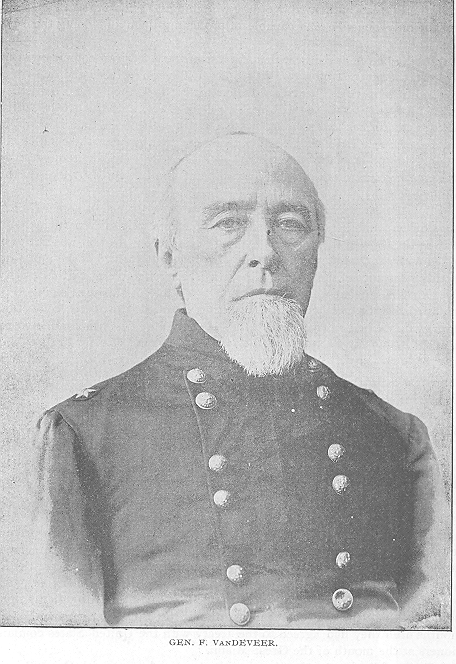
THE CENTENNIAL ANNIVERSARY OF HAMILTON, O. - 19
tribes in council at Sandusky; when he made a powerful appeal to them to stand up for their rights against the Americans; urged them to take up the hatchet again rather than yield to the Americans.
In June 1785 he called another general council of all Indians he could prevail upon to attend at Niagara, for the same purpose, and to prevent them attending the council at the mouth of the Great Miami which had been called by our government. The council held at Bellefontaine was after the Niagara council and was called, no doubt, with the full concurrence of Sir John Johnson.
Through these influences, as before stated, but one tribe consented to the treaty of Fort Finney, as it is known in history; while the Delawares, Wyandots, Mingoes, Cherokees, Pottowottamies, Kickapoos and fox nations were kept away. The most active agents in all these councils on the part of Britain were Captain Mc'Kee, deputy Indian commissioner; Major Elliott, an officer in the British army and the notorious renegade, Simon Girty. These men traveled from tribe to tribe, exciting the Indians to frenzy by their infamous lying statements, and securing the favorable attention of those poor creatures, by their lavish presents of war material and promises of aid and assistance.
Such was the continuous state of affairs, almost without interruption, from 1783 until the defeat of St. Clair. It may well be imagined how that fearful disaster inflamed the Indians and encouraged their English allies. During all this time the pioneers of this vast and magnificent territory, were slowly but surely pressing westward, to be met at every advance by the savage Indians and their bloody tomahawk and scalping knife, encouraged to their deeds of murder, burnings and rapine by their no less inhuman abettors. Various raids were made by the Indians on the white settlements along the Ohio, both in Virginia and Kentucky. In 1791 a band of about three hundred Indians under the lead of Simon Girty passed down the Great Miami river and attacked Dunlap's Station which was erected on the east side of the river, a short distance south of the covered bridge, near the present village of Venice, in Butler County. Four men had been out exploring land on the west side of the river, in what is now Ross township, Butler County.
They were attacked by the Indians; one was captured, one killed, the other two escaped, one badly wounded. The attack on the Station was repulsed, after a siege of nearly two days and after re-enforcements arrived from Fort Washington. Poor Abner Hunt, the captured man, was tied to a sapling about which the Indians built a fire and roasted him to death, in full view and hearing of the garrison who were unable to render him any assistance. It was one of the most cruel of the many cruel acts of the savage Indians, and, with other similar acts of the Indians finally aroused the government to the necessity of punishing these perpetrators of such savagery.
The territory embraced within the present state of Ohio was regarded
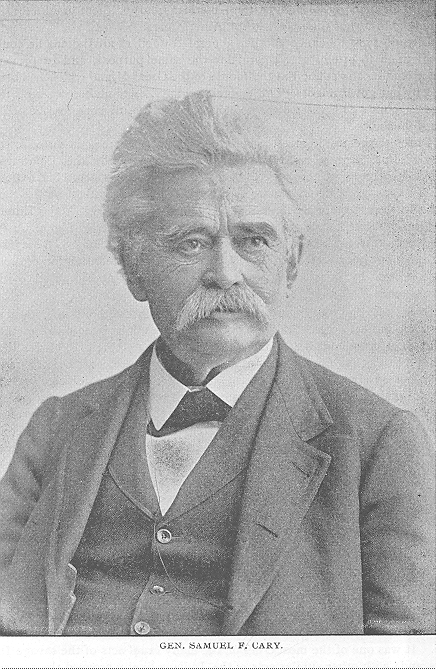
THE CENTENNIAL ANNIVERSARY OFD HAMILTON, O. - 21
by the Indians as the most beautiful and bountiful land they possessed, par ticularly all that portion drained by the Great Miami river and its tributaries. At the site of the present city of Piqua was a large and populous Indian village, called Picklawinny; while surrounding it in every direction, along the Sciota, the Maumee, the Muskingum and other streams, was a dense Indian population, extending to and along the Wabash, St. Joseph and other streams in the present state of Indiana. All this was the parade of the Indian hunter; to the villages in this territory he returned from his hunting expeditions and forays on the white settlements. To these villages many a poor white prisoner was carried to be tortured at the stake for the gratification of his savage captors. The Great Miami river was one of the most usually adopted highways for the Indian raids into Kentucky and the settlements along its banks.
At this date, 1791, Ohio was a vast wilderness. There was a settlement at Marietta on the Ohio river; one at Columbia, above Fort Washington which stood where Cincinnati now is built and which was the seat of the Federal army in the Northwest Territory; Dunlap's Station on the Great Miami river, about seventeen miles above the Fort and Covalt's Station about twelve miles up the Little Miami river.
After the attack upon Dunlap's Station, the government determined to punish the Indians for this and other savage raids upon the border settlements. General Arthur St. Clair was directed to command the expedition, and the army was ordered to concentrate at Fort Washington.
The spring and summer were occupied in preparation, which was attended with all the delays incident to the natural obstacles of the country, through which the army was to operate, and, to the financial embarassment of the government; so that it was not until September that the command was ready to take up its line of march toward the Indian villages about the headwaters of the Great Miami river. About the 16th of that month the army reached the site of the present city of Hamilton.
There it was determined to erect a fort to be used as a base of operations nearer the scene of the expected conflict. The fort was laid out and building began upon it on the 17th, and it was finished on or about the last day of September, or the first day of October.
It was named Fort Hamilton, after Alexander Hamilton, then Secretary of the Treasury of the United States.
Such was the beginning, and such were the events that lead to the founding of the city of Hamilton, on the banks of the Great Miami.
From that beginning it has grown until now it is a city of over 20,000 people, as enlightened prosperous and intellectual as can be found on the globe. It contains as many of the elements of progress and enlightened civilization, with all that tends to embellish and refine human existence as any city in the United States. It has splendid public buildings, first-class
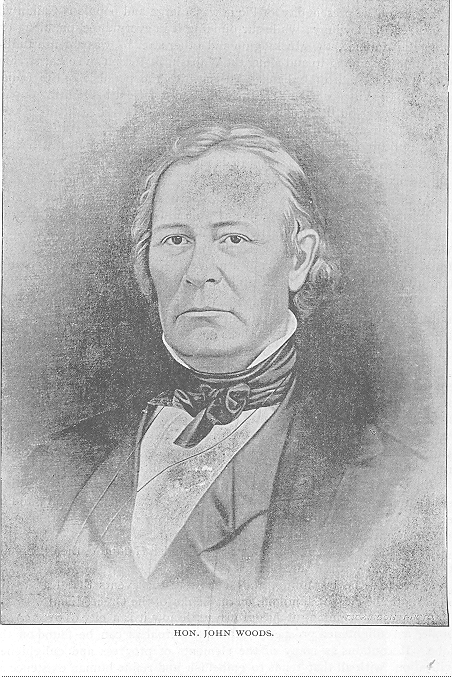
THE CENTENNIAL ANNIVERSARY OF HAMILTON, O. - 23
educational facilities and public improvements; varied and extensive manufactures second to none anywhere; splendid churches of various denominations, the members of each of which concede to all others what they ask for themselves, namely; freedom to worship God according to the dictates of their own conscience. This people are not unmindful of the struggle of their forefathers to establish the free government under which we live and the freedom we enjoy. To honor their memory, to educate our children to do likewise and to renew the patriotism and love of country which is the sacred duty of all good citizens, it was determined to celebrate the centennial anniversary of the founding of the city of Hamilton, in a manner worthy of its founders, of the pioneers who reclaimed this country from the wilderness and the savage, and worthy of the great Republic of the West, an important part of which is the Great Miami valley which was the scene of the principal events that lead to the founding of our beautiful city.
HISTORY OF THE PREPARATIONS AND DESCRIPTION OF THE CELEBRATION,
The first public meeting, looking to the celebration of the one hundredth anniversary of the settlement of the city of Hamilton was held by the officers and members of The Hamilton Battallion; an organization composed of the uniformed societies and military companies of the Ohio National Guard of the city. It was resolved to call a meeting of the citizens for the evening of July 10, 1891.
At that public meeting Thomas Millikin Esq. was elected chairman and Lieutenant F. D. Bristley was elected secretary. After several patriotic speeches had been made by citizens, it was resolved that the chairman select five prominent citizens, and they, with the chairman select a committee of twenty-five, to be known and called Centennial Committee and to have the absolute charge and management of the entire celebration. Mr. Millikin selected as the committee of five, Captain W. C. Margedant, Joseph J. Pater, Isreal Williams, John F. Neilan and George T. Reiss, and together they selected the following named persons to constitute the Centennial Committee.
CENTENNIAL COMMITTEE.
FIRST WARD—W. C. Margedant, S. I,. Beeler, Rev. E. W. Abbey, F. D. Bristley, H. C. Gray.
SECOND WARD—Thomas Millikin, Christian Pabst, Rev. Francis F. Varelman, Peter Schwab, Lazard Kahn.
THIRD WARD—Israel Williams, Thomas V. Howell, Robert Allstatter, Charles I. Keely, William C. Frechtling.
FOURTH WARD John V. Neilan, L. M. Larsh, W. Z. Kumler, Jos. J. Pater, Fred C. Mayer. FIFTH WARD—George T. Reiss, R. C. McKinney, Max Reutti, W. B. Carr.
Afterwards the following members as a Finance Committee, were added to and constituted part of the general committee to-wit : Charles E. McBeth, Robert M. Elliott, Henry P. Deuscher, L. M. Larsh, George W. Stace and William Herrman,
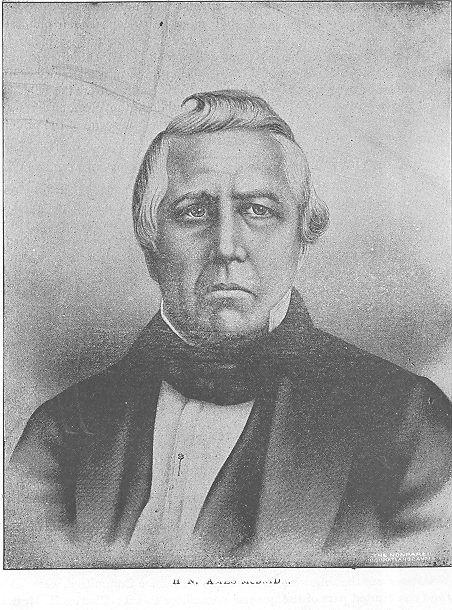
THE CENTENNIAL ANNIVERSARY OF HAMILTON, O. - 25
Other committees were appointed at different times as follows:
HISTORICAL AND LITERARY COMMITTEE.
Thomas Millikin. Dr. Cyrus Falconer. Rev. F. W. Abbey. James W. See.
Isreal Williams, Chairman.
COMMITTEE ON TRANSPORTATION
Thomas V. Howell, Chairman. William Beckett. Peter Schwab.
COMMITTEE ON INVITATION
L. M. Larsh, Chairman. John F. Neilan. Geo. T. Reiss.
COMMITTEE ON PRINTING
John F. Neilan, Chairman. Isreal Williams. F. D. Bristley.
COMMITTEE ON MUSIC
Prof. Fred C. Mayer, Prof. John L. Gottschalk Prof. William Huber.
Henry Herrmann, Joseph J. Pater, Robert Allstatter.
LADIES COMMITTEE.
FIRST WARD—Mrs. J. C. Hooven, Mrs Jos. A. Fromm, Mrs. Charles Sohngen, Miss Mary Rossman, Mrs. Nelson Williams, Mrs. Alston Ellis, Miss Lutie Sohngen, Mrs. Martin Mason, Miss Lutie Matthias, Mrs. Mary Murphy, Mrs. H. C. Gray. Mrs, Charles W. Gatti, Miss Annie Laubach. Mrs. S. Blair, Mrs. William Seward.
SECOND WARD--Mrs. Jas. V. Neal, Miss Kate Schwab, Miss Mary Millikin, Miss Ada Fye, Miss Lillian Lorenz, Miss Adda Markt, Miss Josephine Crawford, Miss Anna McBeth, Mrs. D. R. Sheehan, Mrs. Thomas M. Boyd.
THIRD WARD—Miss Nannie Kennedy, Mrs. John M. Marr, Miss Rachel Fitton, Mrs. Charles Howald, Mrs. A. T. Good, Mrs. Albert Kennedy, Mrs. C. Falconer, Mrs. Adolph Metzner, Miss Minnie Schwartz, Mrs. J. W. Overpeck.
FOURTH WARD—Mrs. Josephine Weiler, Mrs. Sam. H. Millikin, Miss Carrie Brock, Mrs.
R. N. Andrews, Miss Pauline Steffe, Mrs. L. M. Griffis, Mrs. G. W. Stace, Miss Libbie Deuscher, Miss Aggie Burns, Miss Elizabeth Conner.
FIFTH WARD—Mrs. Z. B. Coes, Mrs. Julius Bunson, Mrs. John Bender, Miss Ida Curtis Mrs. L. A. Powell, Mrs. John S. Spoeri, Miss Jennie L. Wasson, Mrs. Jos. H. Webster, Mrs. Max Ruetti, Mrs. Chris Benninghofen.
ASSISTANT COMMITTEES TO LADIE'S COMMITTEES IN EACH WARD.
FIRST WARD —John A. Keller, Dr. H. E. Twitchell, Abe Rothwell, Benj. W. Baker, Dr.
J. J. Roll, Thomas Moore, Jr., J. P. Smyers, A. W. Margedant, E. E. Hull, C. W. Gath,
H. C. Blum, F. D. Dick, F. D. Blackburn, Wm, Longfellow, Jack Henninger, William Hunter, .James Tully, A. J. Welliver, Thomas Temple, John L. Beeler.
SECOND WARD—Christ Pabst, Dr. John Francis, L. Zecher, F. A. Rife, Charles Holbrock, Homer Gard, R. S. Carr, J. B. Baker, Wm. Lodder, W. W. Crawford, Dr. Minor M. Jacobs, C. E. McBeth, John N. Bandtel, Mark Millikin, Frank Overmyer, John Schweitzer, Maurice Kilsheimer; Virgil H. Gilcrest, Rev. C. W. Gullette, Samuel P. Stewart.
THIRD WARD—Dr. Geo. C. Skinner, Wm. L. Huber, Dr. Frank M. Fitton, Edgar A. Belden, A. Metzner, D. W. Fitton, Prof. Albert Mayer, Joe Long, Walter Osborne, Dr. C. I. Keeley, W. R. Small, Charles S. Millikin, Jesse C. Smith, George Beckman, Charles Howald, David Pierce, J. W. Conboy, Otto Metzner, F. P. Stewart, Lee Rose, George H. Seidel.
FOURTH WARD—W. I;. Kumler ,C. J. Smith, P. R. Welsh, F. X. Duerr, Harry J. Wallace,
S. H. Millikin, M. O. Burns, Rev. David Feuerlicht, Gustave Steffe, Albert Wagner, H. L. Gifford, E. H. Haines, Gus Kummerling, Chas. D. Mathes, H. G. Ruder, P. B. Walker, L. C. Overpeck.
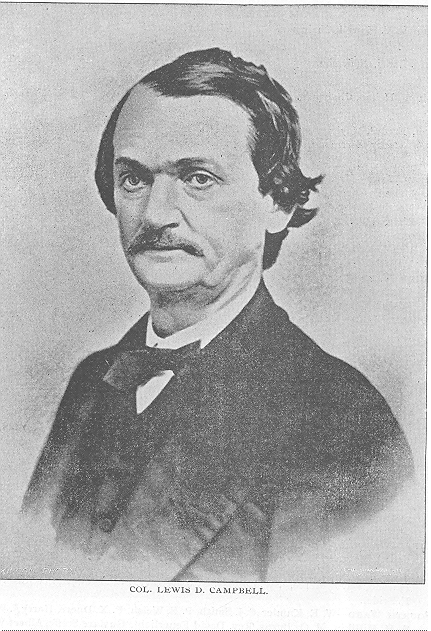
THE CENTENNIAL ANNIVERSARY OF HAMILTON, O. - 27
FIFTH WARD—Max Reutti, Wm. G. Holbrock, Thomas Blair, Fred Doeller. Fred J. Hilker, John Helvey, Robt. C. Hargitt, Daniel M. McClung, H. R, Mathes, Geo.T. Reiss, Dr. Clarence Wasson, Louis A. Dillon, S. W. Powell, Theadore Buck, Governeur Morey, Wm. Bender, Jr., John Day, Aaron Wesco.
Assistants to W. C. Margedant, Committe on Fire Works—John F. Gardner, George T. Reiss, John Helvey.
TOWNSHIP AUXILIARY COMMITTEES.
MIDDLETOWN AND LEMON TOWNSHIPS—Paul J Sorg, Samuel P. Hughes, W. H. Todhunter, Martin McLaughlin, Janice K. Thomas, George Sebald.
LIBERTY TOWNSHIP---Philip Hughes, B. F. Kyle, Rev. R. McHugh.
WAYNE TOWNSHIP---Robert Withrow, Wilson Smith, J. R. Owsley.
OXFORD AND OXFORD TOWNSHIP-- Dr. H. D. Hinckley, Daniel P. Beaton, S. C. Richey,
Gus Schlenck, Thomas Law.
MILFORD TOWNSHIP—W. T. Hancock, John F. Mee, J. H. Schollenberger.
MADISON TOWNSHIP - Jacob Banker, John Pritchard, John V. Good.
UNION TOWNSHIP -Joseph Allen, A. J. Van Hise, E. Taylor Elliott.
HANOVER TOWNSHIP--Jas. W. Nichol, W. B. Davis, A. C. Kumler.
RILEY TOWNSHIP—Dr. D. D. Borger, Charles Urmston, James Duncan.
MORGAN TOWNSHIP—R. J. Bell, Aaron L. Morris, Thomas Shroyer.
ROSS TOWNSHIP -Luke Bradley, Lewis J. Demaret, Andrew J Lewis.
ST. CLAIR TOWNSHIP—Amos D. Kumler, James Riley, Samuel Baird.
Permanent officers of the Centennial Committee were elected as follows
Hon. Thomas Millikin, President; T. V. Howell, Vice President; F. D. Bristley, Secretary ; S. L. Beeler, Treasurer; Rev. Francis V. Varelman, Chaplain.
Captan W. C. Margedant was unanimously elected Commander-in-Chief of the parade with power to select his own staff and appoint the commanders of divisions, who were authorized to appoint their own aids. John F. Neilan was appointed to write all the advertising matter for the occasion and newspaper articles.
The Centennial Celebration was held on Thursday, Friday and Saturday, September 17, 18 and
19, according to the following official programme:
THURSDAY, SEPTEMBER 17.
The celebration was Commenced at sunrise this day, by the firing of thirteen guns, in commemoration of the number of states in the union at the time of the location of Fort Hamilton, by General Arthur St. Clair.
During the day the citizens and public authorities put in place so far as was practicable, the decorations and ornamentations they desired to have and use in the celebration.
In the evening at 7:30 o'clock there was a grand dress parade on High Street by "The Hamilton Battalion," comprising all the Uniformed, Military and Civic Organizations of the city. After which the beautiful spectacle entitled "Tine Feast of Flowers and Youth," was participated in by the Youth and School Children of Hamilton, in marches, music and songs.
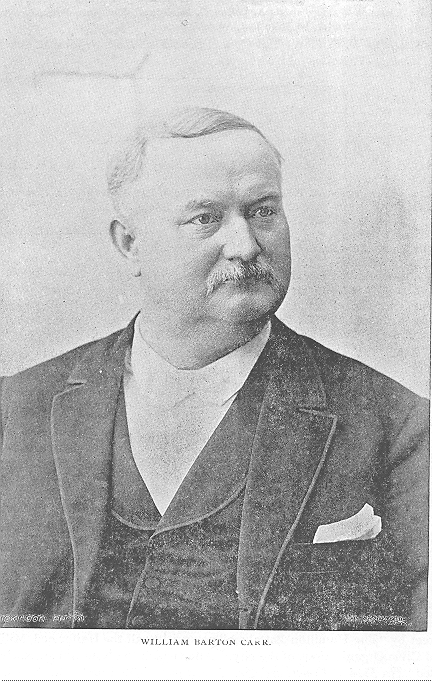
THE CENTENNIAL ANNIVERSARY OF HAMILTON, O. - 29
FRIDAY SEPTEMBER 18.
At sunrise 44 guns were fired in commemoration of the number of States now in the Union. The city and citizens completed their decorations and preparations for the ensuing day.
In the evening at 6:30 o'clock a grand band concert was held at the Court House, under supervision of Prof. F. C. Mayer, George Schweinfest director.
The following program was rendered:
1, March—"The Gladiator.. ...............Sousa
2. Waltz —"Virginia" .................... Rathbun
3. Potpourri—" Imperial" ..................Pettee
4. March—"Medora" .....................Thornar
5. Waltz—"Thunnger. ...............Keisler.
6. Polka—" Return" ................ Jennings.
7. Overture—“Bridal Rose.......... Lavelle
8. National Air....................................
Immediately after the concert a Public Meeting of Citizens was organized with Hon. Thomas Millikin, chairman. Addresses were then made upon the following topics by the following distinguished gentlemen selected for that purpose.
1791.—HAMILTON,-1891. Hon. L. M. Larsh; Mayor of Hamilton.
1791.—THE MIAMI VALLEY, —1892. Judge Samuel F. Hunt. Glendale, Ohio.
1791.—THE STATE OF OHIO,-1891. Governor James E. Campbell, Hamilton, Ohio.
1791,—THE UNITED STATES,-1891. Rev. W. O. Thompson, D. D., President of Miami
University, Oxford, Ohio.
1791,—THE WORLD.-1891. General Samuel F. Cary, College Hill, Ohio.
THE FUTURE, Rev. E. W. Abbey, Hamilton, Ohio.
SATURDAY SEPTEMBER 19.
The officers of the meeting this day were :
HON. THOMAS MILLIKIN, President,
F. D. BRISTLEY. Secretary,
REV. FRANCIS F. VARELMAN, Chaplain.
110 HONORARY VICE PRESIDENTS.
The following named citizens of Butler County, all of whom are upwards of 80 years of are, were selected for the occasion and most of whom were present. The following is an alphabetical list of their names, their postoffice address and their respective ages.
William Andrew, Hamilton.........82 years “
James Campbell Andrews, Ross ..82 "
Daniel Beeler, Hamilton .............81 "
William Booth, Oxford ...............82 “
William Braffield, OxOxford...........80 “
William Brown, Ross .................82 “
Clark Baker, Mauds ...................83 “
Michaelaal Baldern, Darrtown. 86 “
Jacob Bake, Heno ......................87 “
Judge W. R. Cochran, Hamilton. 80 “
Joseph Clawson, Okeana. ......... 88 “
Joseph Cann, Okeana. ...............87 “
Richard Conaroe, Seven Mile... 82 “
William Cone, Koss ................. 81 "
John Clafton, Middletown........ 80 “
John N. Carey, West Chester......82 “
Joshua Davis. Hamilton .............83 “
James Davis, Reiley ..................82 “
Harvey Denman, Stockton........ 82 “
Joseph Demore Ross ................ 82 “
Bartholmew Demoret, Ross........ 80 “
David E. Davies, Paddy's Run.... 80 “
Peter Euler, Hamilton..................90 “
Michael F. Eisel, Hamilton .........83 “
David EnEnyartMiddletown .......80 “
Dr. Cyrus Falconer, Hamilton .....81 “
Epperson Fulkerson, Hamilton ....81 “
Joseph W. Frazee, Reiley ............82 “
Andrew Flelenne,Sevenile ..........82 “
George Fulk, Middletown ...........84 “
Alexander Guy, Oxford ..............90 “
William Gray, Mauds .................87 “
James Giffen, Hamilton ..............81 “
Thomas Garone, Oxford..............80 “
Daniel Gawker, Poasttown ..........87 “
Daniel Hawk, Ross ....................80 “

THE CENTENNIAL ANNIVERSARY OF HAMILTON, O. - 31
M. Goebel, Trenton 86 years
Isaac Hagerman, Hamilton 90
Abel Hoel, Hamilton 82
Robert Harper, Hamilton 83
Sebastain Herold, Hamilton 82
Shadrack Harrison. Hamilton 86
Enoch Haskell, Oxford 80
John Hendrix, Oxford 85
James Harper, Clawson 81
Ellison Harkrader, Blue Pall 80
John Isaminger Okeana 83
James W. Jones, Okeana 81
John P. Jones, Paddy's Run 81
William N. Johnson, Oxford 82
Thomas Jefferson, Oxford 80
Dr. Edward Kimball, Monroe 81
Peter Kong, Hamilton 82
Jacob Kumler, Millville 80
Michael Kumler, Millvilie 80
Charles R. Kennedy, Hamilton 81
St Joseph Rern, Heno 80
Charles C. Legg, Bethany 90
William Linn, Monroe 81
Andrew Lewis, Millville. 87
Alexander Lntes, Okeana 80
Hon. Mark C. McMaken, Ham'n. 91
James Murphy, Oxford 81
John Miller, Oxford 80
David M Magie, Oxford 80
Samuel R. Mollyneaux, Oxford 81
Thomas Manning, Oxford 84
John VanDerveer, Hamilton 96
John Voorhees, Bethany 82
Richard Veriker, Oxford 80
Daniel Wollenweher, Hamilton 91
John Wick, Hamilton 83
Jeremiah Warwick, Hamilton. 80
E. Moorehouse Padd'ys Run 80 years
Wilson Martindale. Ross 84 "
James McCloskey, Millville 80
David Mesler, Heno 93
Washington Miller, McGonigle 81
James A. Neil, Hamilton 81
Capt. D. P. Nelson, McGonigle 81
Robert Orr, Collinsville 82
William Prewitt, Bethany 83
Thomas Pope, Trenton 86
James Rossman, Hamilton 89
Thomas Roberts, Oxford 80
Russell Reston, Middletown 85
Peter W. Shephead, Hamilton 87
Daniel Shellhouse, Hamilton 57
Thomas B. Sterrett, Hamilton 82
Charles Sorber, Hamilton 85
Dr. Alanson Smith, Hamilton 85
John Sloneker, Collinsville 82
William J. Stephenson, Oxford 80
Sandy Stewart, Oxford 80
Ludwig Schaffer, Trenton 80
John Sinkey Heno 81
Lansdale Simpson, Bethany 84
John Tudy, Hamilton 85
James Taylor, Hamilton 81
Samuel Taylor, Hamilton 80
Shem Thomas, Poasttown 81
Isaac Teetor, Okeana 84
David Urmston. Hamilton 80
George Vinnedge, Hamilton 82
Reuben Woodruff, Paddy's Run 87
John Wright, Oxford 80
James Watson, Middletown 87
William Webster, Middletown 80
John Wolf, Monroe 82
Peter Young, Hamilton 82
The exercises this day were varied and magnificent in character. Commencing at sunrise by the firing of 100 guns by Capt. Kleins gun squad, in commemoration of the illustrious progress made by this community during the past century.
ORDER OF EXERCISES.
1st. Prayer by the Chaplain.
2d. Grand vocal and orchestral concert, under the direction of Prof. F. C. Mayer, rendered the following programme of selected music:
Miss Emma Reutti - Pianist
Miss Matilda Brinker}
Miss Fannie Smith} - Soprano
Mrs. Rose Mayer}
Mr. Chas. Schweinfest - Concert Meister
Mr. Henry Brinker - Bass
Mr. Albert Wagner Tenor
Mr. Robert Fisher - Tenor
Mr. Herman Bellstedt, Jr. Cornet Soloist.
Full Chorus of Soo voices and Grand Orchestra of too pieces.
MUSICAL PROGRAM.
1. March—"Cornation" Mayerbeer - Orchestra.
2. Hymn of Praise, - - - - - - - Mendelssohn.
I. Symphonic.
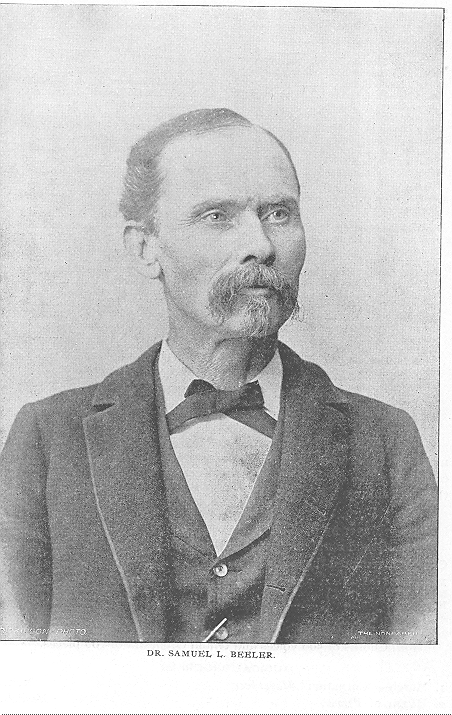
THE CENTENNIAL ANNIVERSARY OF HAMILTON, O. - 33
2. Chorus, "All men, all things."
2 ½ Soprano solo and chorus, "Praise thou the Lord."
3. Recitation and solo, "Sing ye Praise."
4. Chorus, "All ye that Cried unto the Lord."
5. Duet and chorus, "I Waited for Thee Lord."
6. Tenor Solo "The Sorrows of Death."
7. Chorus, "The Night is Departing."
8. Choral "Let all Men Praise the Lord."
9. Duet, "My Tears Shall Always be Thy Mercy."
10. Chorus, "Ye Nations Offer to the Lord."
Mrs. Rose Mayer, Soprano. Miss Matilda Brinker, Soprano. Mr. Albert Wagner, Tenor. Full Chorus and grand orchestra.
3. Cornet Solo, "Centennial Polka," Mr. Herman Bellstedt - Bellsledt
4. Chorus "Hallelulah" Full Chorus and Grand Orchestra - Beethoven
5. Overture, "Raymond" Grand Orchestra, - - - Thomas
6. Chorus—"The Heavens are Telling" - - - - Haydn
Trio, Miss Fannie Smith, Mr. Robert Fisher, Mr. Henry Brinker. Full Chorus and Grand Orchestra.
7. National Hymn, "America," All the People, Bands and Orchestra. Everybody requested to sing this National Anthem.
—1—
My country 'tis of thee,
Sweet land of liberty
Of thee I sing;
Land where my fathers died,
Land of the pilgrims pride,
From every mountain side,
Let freedom ring.
-2-
My native country thee,
Land of the noble, free,
Thy name I love;
I love thy rocks and rills,
Thy woods and templed hill;
My heart with rapture fills,
Like that above.
—3—
Let music swell the breeze,
And ring from all the trees,
Sweet freedoms song;
Let mortal tongues awake,
Let all that breathe partake,
Let rocks their silence break,
The sound prolong.
—4—
Our Father's God to thee
Author of liberty,
To thee we sing;
Long may our land be bright,
With freedom's holy light,
Protect us by thy might,
Great God our King.
3rd. Brief address by the President in presenting., the orator of the day to the audience.
4th. Elaborate oration of Judge Joseph Cox, of Cincinnati, on the Pioneer history of Hamilton and the Northwest Territory. Short addresses were next made by the following gentlemen: Hon. Calvin S. Brice, U. S. Senator of Ohio; Hon. Wm. McKinley, candidate for Governor of Ohio.
5th. Other short addresses were made by eminent gentlemen present at
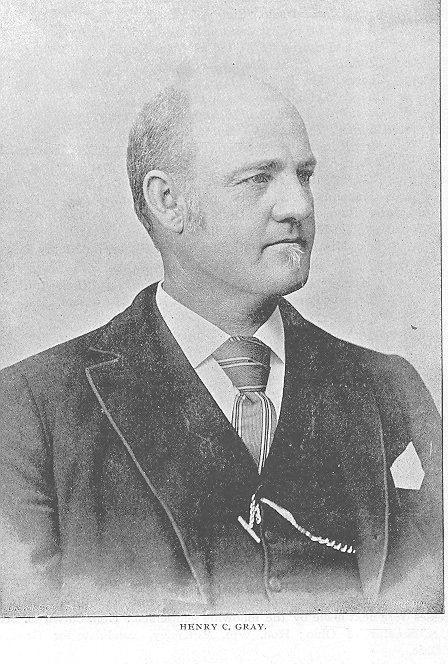
THE CENTENNIAL ANNIVERSARY OF HAMILTON, O. - 35
6th. Promptly at 2 o'clock P. M. the grand parade moved on Main Street in the First Ward, under direction of the Grand Marshal.
The Grand Marshal and his staff consisted as follows:
Grand Marshal, Capt. W. C. Margedant ; Chief of Staff, Thomas Millikin; Adjutant General, F. D. Bristley ; Majors, J. F. Neilan, H. L. Morey, L. M. harsh ; Assistant Grand -Marshals, Rev. F'. W. Abbey, S. L. Beeler, H. C. Gray, Peter Schwab, Rev. F. N Varelman, hazard Kahn, Robert Allstatter, Christ Pabst, Jos. H. Long, Thomas V. Howell, Joseph J. Pater, Fred C. Mayer, Dr. W. Z. Kumler, Prof. Alston Ellis, Geo. W. Stace, H. P. Deuschcr, Christ Benninghofen, Dr. Dan Millikin, Homer Gard, Chas. It. McBeth, W. C. Frechtling, W. L. Huber, Albert Dix, J. M. Long, Isaac Rogers, J. M. Downey: Aide-de-Camp Allen Andrews, Dr. C. I. Keeley.
The parade consisted of four grand divisions preceded
1st. By four Heralds with trumpets.
2d. By the Police of the City.
3rd By the Grand Marshal and Staff.
4th. By the Governor of the State and his Staff.
FIRST DIVISION—Military.
Col. George H. Phillips, Grand Division Commander; Gen. Ferd VanDeveer, Chief of Staff; Lent. Walter Shearer, Assistant Adjutant General ; Col. Jas. U. Neal, Col. Thomas Moore, Dr. T. B. Talbott, Majors ; W. H. Allen, Maj. G. W. Rue, W. W. Lane, Willard Smyers, F. W. Whitaker, Geo. T. Earhart, David L. Howell, Geoage Rupp, Charles O. Richter, Thomas M. Boyd, H. U. VanDeveer, W. M. Dingfelder, Andrew Fallert, Thomas Goldrick, John F. Heath, Culla J. Smith, Joseph H. Myers, D. H. Hensley, Freeman Compton, P. P. Walker, C. W. Gath, J. L. Havens, Assistant Division Marshals; Capt, B. C. Sneider, Capt. N. B. Tubbs, Capt. George Hafertepen, Aids-de-camp.
This division consisted of the Military and Uniformed Bodies.
1st. Grand Division Commander and Staff.
U. S. Troops preceded by U. S. Band.
Ohio National Guards and Cadets.
G. A. R. and soldiers of the late war and war with Mexico.
Uniformed Civic Organizations.
SECOND DIVISION—Historical.
Capt. Adolph Metzner, Grand Division Commander; Dr. Geo. C. Skinner, Chief of Staff; Max Reutti, Assistant Adjutant General, Gustave Steffee, F. W. Soehner, Albert Hossfeld, G. A. Lambert, W. W. Lane, Wm. F. Bender, John Robertson, John C. Rochelle, Chas. F. Diefenbach, James Tully, Philip Conboy, I. N. Slayback, W. N. Gray, W. B. Brown, Chas. Sohngen, John Doellman, Henry Sohn, C. D. Mathes, Assistant Division Marshal A. Schultz, Win. Ritchie, Sam. D. Fitton, Aids de camp.
This division consisted of tableau wagons and floats, representing persons sons and objects of historical prominence, etc., etc., in the following
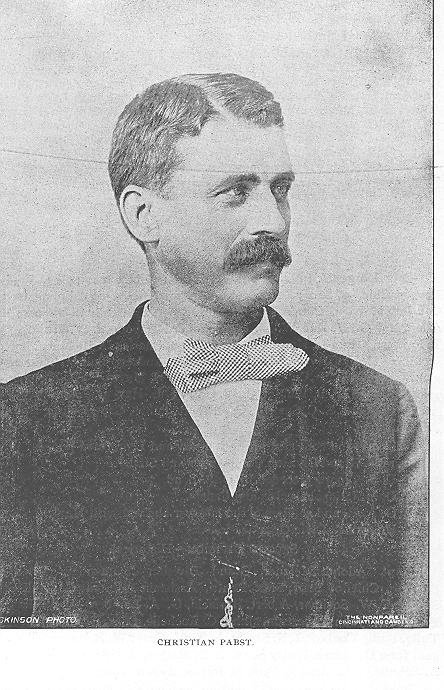
THE CENTENNIAL ANNIVERSARY OF HAMILTON, O. - 37
1st. Band.
2d. Grand Division Commander and Staff.
3rd. First Grand Pageant. a.—Continental soldiers with allegorical, ,representation of Yankee Doodle. b.—Fort Hamilton, tableau flanked by Indians. c.—Old Pioneers. d.— Indians on horseback, e.— Drum corps and fifes followed by the old citizens' home guard.
Second Grand Pageant. a.—An evening at the cabin of our forefathers, and the pioneer's family after the day's work. b.—Spinning bee. c.—Corn husking.
Third Grand Pageant. a—The old stage coach mail service.
Fourth Grand Pageant. a.—Canal boat of former times. b.—The traveling Judge and lawyers. c.—The visiting preacher. d.—The Indian root doctor and country physician. e.—The country news and printing office. f—Mail coach and mail carrier on horseback.
Fifth Grand Pageant. a.—Family of emigrants with wagons, oxen, hunters and trapperr.
Sixth Grand Pageant. a.—General St. Clair and staff on horseback.
Seventh Grand Pageant. a—The first court house and postoffice in Hamilton.
Eighth Grand Pageant. a.—Allegorical representation of civilization, law, agriculture, industry, commerce, education, literature, music, art and peace.
THIRD DIVISION—Industrial.
Col. R. C. McKinney, Grand Division Commander, Col. J. H. Springer. Chief of Staff; John D. Krocker, Adjutant General; George Helvey, W. B. Carr, Frank X. Black, Majors; William Long, Thomas Dowling, J. L. Blair, Martin Mason, William Schwab, D. W. Fitton, George A. Miller, George R. Seidel, George Stroh, Peter Benninghofen, Conrad Semler, John Conboy, John F. Spoerl, Jos. N. Mass, Virgil E. Gilcrest, Charles Winter, George Holbrock, Peter B. Holly, Charles E. Doty, Robert Fischer, Charles Holt Brock, P. G. Berry, Joseph Marr, Assistant Division Marshals; August Margedant, Otto Metzner, Aids-de-camp.
This division consisted of tableau wagons and floats, carrying representations of the various kinds of manufactories and other industries of Hamilton. The order of match was:
1st. Band.
2nd. Grand division, commander and staff.
3rd. Tableau wagons and representations.
FOURTH DIVISION—Agricultural and Civic.
Christ Rothenbush, Grand Division Commander; S. T. Harwood, Chief of Staff; Robert M. Elliott, Assistant Adjutant General; F. M. Hughes, Jas. Reed, Philip J. Faber; Majors; Levi J. Truster, D. L. Tyler, James W. Lewis James Linn, Nathan C. Flenner, R. M. Billingslea, Robert Long, James M.

THE CENTENNIAL ANNIVERSARY OF HAMILTON, O. - 39
Carr, A. Morris, Joseph Billingslea, J. W. Sloneker, J. R. Emrick, William Heerman, P. J. Sommers, Thomas J. Hughes, Wm. Allen, Isaac L. Riley, Charles Fallert, W. H. Jacobs, A. J. Welliver F. E. Humbach, William Schlosser, Dr. J. J. Roll, John Bender, Jacob Seybold, assistant Division Marshals; W. H. Todhunter, Frank Morris, Aids-de-camp.
This division comprised (include the city and county officers and different civic organizations) township delegations and all bodies and societies not included in the other divisions and including all citizens who joined in the parade as individuals.
1st. Band.
2nd. The grand division commander and staff.
3rd. The clergy and distinguished guests in carriages.
4th. The city and county officers and municipal boards.
5th. Civic organizations and township delegations.
6th. Citizens.
LINE OF MARCH.
Commencing at the head of Main street, thence east to suspension bridge, across suspension bridge to High, east on High to Third, south on Third to Central avenue, southeast on Central avenue to Walnut, east on Walnut to Fourth, north on Fourth to East Ludlow, east on East Ludlow to Tenth, north on Tenth to Heaton, west on Heaton to Second, south on Second to Dayton. east on Dayton to Seventh, south on Seventh to High, west on High
to Court House where the whole procession passed in review before the Grand Marshal and his staff and Governor Campbell and his staff.
This evening the public and private buildings of the city were generally illuminated in a highly interesting manner; and the exercises of the Centennial concluded with an elaborate display of Fire Works according to the following programme ; the most varied and magnificent ever witnessed in this country.
PROGRAM OF THE FIRE WORK DISPLAY.
1st. The commencement of the pyrotechnical exhibition was heralded by the ascension of a number of aerial report shells and 4-pound display rockets.
2nd. Ascension of three large balloons, representing animals in outline and coloring. Ascension of three fireworks balloons carrying fireworks up into the air, which burned in a high altitude.
3rd. Firing of thirteen Union Report Shells from motors.
4th. Display of colored lights, and prismatic illumination of the grounds.
5th. Ascension of a number of rockets from one to four pounds.
6th. Grand display of batteries of golden stars and streamer candles.
7th. Firing of six "A. L. Due 18 inch celebrated Mammoth Shells"
with brilliant illuminated colored lights.
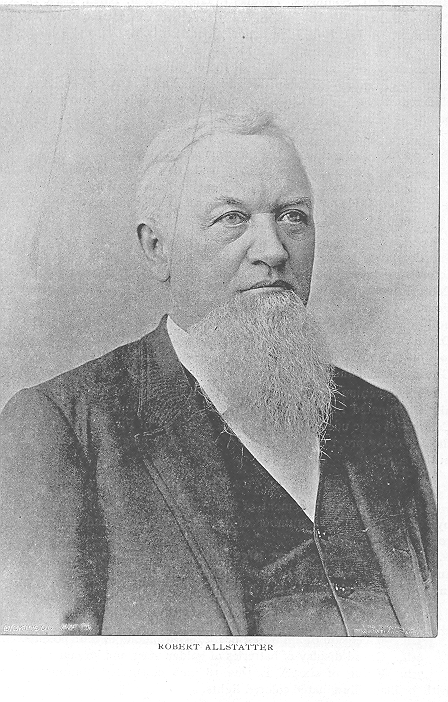
THE CENTENNIAL ANNIVERSARY OF HAMILTON, O. - 41
8th. Exhibition Design—" Welcome"—In honor of our guests. This appeared in letters of 24-inches high in double colored lights encircled by yarbs of brilliant fire, covering a space of 24 by 28 feet.
9th. Ascension of a number of A. L. Due special exhibition rockets of 8-pound and 12 colored tourbillions.
10th. Flight of six 18-inch shells and two mines of sancissions fired from 18-inch motors.
11th. Exhibition Piece--Oriental Tree. This well known and celebrated piece consists of a vertical support, with stars on top and bottom and a large wheel shown in rotation in the center, and smaller wheels also rotating on the bottom, arranged with cascades fired trom between the points of the star on the top of the piece and from four sides of the wheel; covering a space of 22 by 35 feet when burning.
12th. Ascension of exhibition rockets and a number of 24-inch bombshels and mines of sancissions.
13th.—Exhibition Piece.—Mount Vesuvius.—Representing an eruption of Vesuvius.
14th. Ascension of a number of colored display rockets and mines of sancissions, mammoth bouquet shells and tourbillions.
15th. Exhibition Piece—The American Star—shown in brilliant lance work, yarbs and cascades.
16th. Ascension of golden willow, parachute and bullion of colored star rockets and large sized bouquet shells.
17th. Exhibition Piece—Horizontal Caleidascope— consisting of colored cascades, yarbs and large mines of colored stars, revolving and changing constantly in coloring and design. (13y special request.)
18th. Ascensions of rockets, shells, mines of sancissions and tourbillions.
19th. Exhibition pieae—The Beauty of Night—consisting of a center star with radiating streamers of light, two rotating wheels, one on each side, and cascades fired from four smaller stars, covering a space 15X20 feet.
20th. Ascension of exhibition rockets and exhibition batteries, illuminating the space with 720 colored balls.
21st. Firing of 4-pound rockets, large bouquet bombshels, and mines of sancirsions.
22nd. Exhibition piece—The Emblem of Egypt.
23d. Flight of tourbillions and magnesium shells, colored stars and mines of sancissions.
24th. Exhibition piece—Forest in Autumn. This very brilliant piece is especially beautiful on account of the large number of large and small revolving wheels placed in symmetrical order, interwoven by large exhibition candles, which, in fining produce graceful curving lines and imitating in color the variegated brilliancy of our Forest in Autumn. Size 20x35 feet.
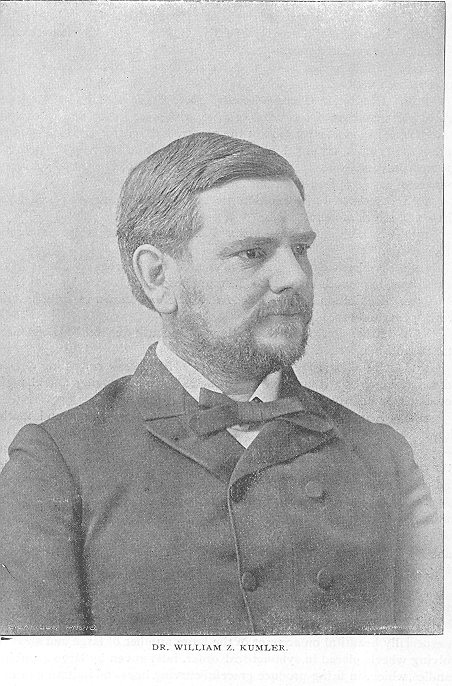
THE CENTENNIAL ANNIVERSARY OF HAMILTON, O. - 43
25th Ascension of rockets and tourbillions.
26th. Exhibition piece.--A Cross of Diamonds, showing in variegated lance work the geometrical form of diamonds, with attached cascades, firing and forming diamonds with revolving wheels, running in opposite directions. Size 28x28 feet.
27th. An ascension of 30 inch bouquet bombshels and mines of sancissions.
28th. Exhibitionpiece.—Thee .Sun Flowers—representing a number of sun flowers. Size 12x18 feet.
29th. Ascension of 4-pound rockets of fine variegated colors.
30th. Exhibition piece-jewel Cluster—consisting of a large central star surrounded by a scintillating cluster of jewels. Size30x30 feet.
31st. Ascension of 4-pound rockets and tourbillions.
32nd. Exhibition piece—Flowery Almond.—Size, 30 feet in diameter; showing two large rotating wheels turning on one shaft in opposite directions, producing brilliant and ever-changing combinations of ormi and blending of colors.
33rd. Flight of bouquet bombshels with golden rain and in brilliant transparent colors.
34th. Exhibition piece.—Sunset at Sea.—Size 30 feet in diameter. This piece is most elegant, imitating in color and brilliant tinted rays of light a sunset at sea, cascades firing in all directions. Fight stars appear in lance-work while a large fire wheel representing the sun, is rotating.
35th. Flight of pound rockets and 4 pound tourbillions.
36th. Exhibition piece—Silver Cross.—Firee, size 40x40 feet. This piece consists of five lance scroll wheels of large dimensions, with yarbs firing from four sides of each wheel, crossing the line of fire in every direction.
37th. Ascension of bouquet bombshels and nines of Sancissions.
38th. Exhibition piece.—Young America's Delight.—Size 30x30 feet.
Consisting of a number of excentric rotating wheels in lancework and yarbs.
39th. Flight of heavy rockets with gold rain and colors, tourbillions and mines of sancissions.
40th. Exhibition piece.—Niagara Falls.-- Size 75X40 feet. A monster painting of the Falls in fire paint.
41st. Ascension of sodium and magnesium rockets and shells.
42nd. Exhibition piece.—Monster- Fiery Phoenix.—Size 50 feet of solid fire, consisting of steel fire wheels of large proportions with brilliant yarbs and golden streamer batteries. A special set piece not surpassed by any exhibition in America.
43rd. Rockets of large calibre in golden rain and gorgeous colors.
44th. Flight of rockets of various size and color effects.
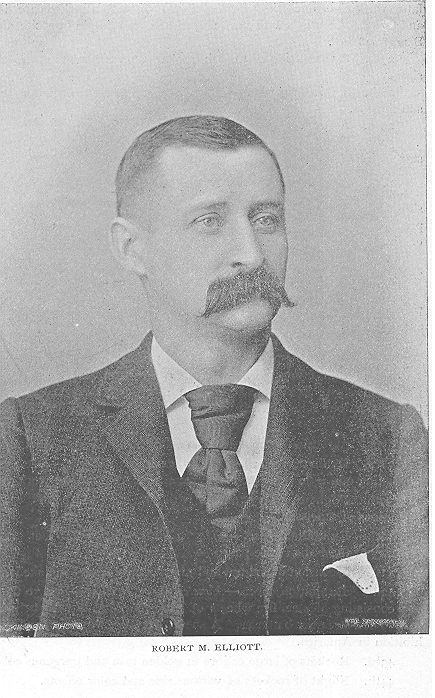
THE CENTENNIAL ANNIVERSARY OF HAMILTON, O. - 45
45th. Exhibition piece. Dedicated to the various industries of Hamilton. --Imperial Mechanical Combination.—Size 40 feet of solid fire, showing a closed fan, opening automatically while burning, colored cascades with fine pointed stars and brilliant scroll-wheel at the bottom, rotating jeweled stars at the top in colored lance-work and brilliant fire.
46th. Ascension of four pound tourbillions, mines of sancission and rockets.
47th. Exhibition piece. Dedicated to the agricultural interests of Butler County by the citizens of Hamilton.—Mammoth Tropical Sun.—Consisting of two of the largest wheels ever seen in America, elaborated with four small revolving wheels, with side effect of thousands of Roman candles, stars of brilliant colored transparent lights and a simultaneous flight of 150 rockets with magnesium fire and various other colors, covering the whole horizon.
48th. Special ascension of extra large and brilliant eight pound rockets and thirty inch bombshells in variegated colors and golden rain,
49th. Exhibition piece. Specially arranged and designed extra large Allegorical Exhibition of pyrotechnical skill never surpassed in size or brilliancy in America. Dedicated to our forefathers of the past centennial, the present and coming generations of the second century of our existence. The design was a tribunal arch in colored lance-work with "HAMILTON CENTENNIAL in double colored letters, With 1791—1891 on the sides. Large revolving globes and side wings of brilliant fires, magnesium and sodium wheels, abundance of shells and profuse flight of colored batteries and Sancissions, finishing with a flight of Soo rockets of golden rain and colors.
50th, Concluding exhibition piece, Dedicated by general committee of the Hamilton Centennial Celebration to the audience.
GOOD NIGHT
Size 28x28 feet, shown in letters of double lance-work 24 inches in height, with yarbs firing from all sides--and a display of colored stars in a. brilliant flight.
The citizens of Hamilton and surrounding country entered into the spirit of the occasion in a manner worthy of a great and free people. For weeks prior to the date of the celebration, the different committees met almost daily. Business was but a secondary consideration and during the week of the celebration was almost entirely suspended. The city was decorated in the most profuse manner with bunting, flags, flowers and everything that would add to its gala appearance or that would please the eye or excite patriotic emotions,
The programme was fully carried out in all its details. That of Thursday evening was one of the most unique and intensely interesting, particularly for the youth of the city, that ever was seen.
Promptly at 7:30 o'clock the bugle called together in front of the court house, the Hamilton battalion, which was to do guard duty. Soon the ward representations, which had formed in their respective wards arrived and were
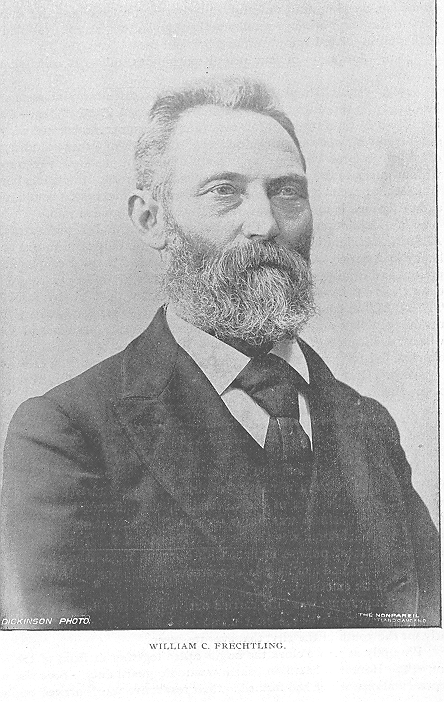
THE CENTENNIAL ANNIVERSARY OF HAMILTON, O. - 47
arranged into one grand procession. A short line of march was gone over and every youthful heart throbbed with enthusiastic patriotism as about him and above him, with the band playing inspiring national music, waved the red white and blue in every imaginable form. Little flags and big flags,—not a child but about him were the colors symbolical of freedom and patriotism.
After going over the line of march the procession was reviewed in front of the court house by Mrs. Campbell, wife of Governor Campbell, who was grand marshal, and by the grand marshals of each division.
First came a detail of police making way for the little ones and then the Hamilton Light Infantry as the guard of honor. The grand marshals followed in carriages.
Then came a delegation with its numerous floats and may-pole with streaming ribbons, it truly was a representation of which to be proud.
The first float of consequence was a beautiful representation of that fascinating fairy-tale "Schna Witchen," or Snow White. The little dwarfs in their mountain home were happy with their beautiful queen and surrounded her with all the comforts and pleasure that dwarfdom could produce.
The prince and his attendants followed and then came a guard of minature revolutionary soldiers with their sheep skin band.
The may-pole surrounded by a bevy of girls dressed in every color of the rainbow was a beautiful sight and reminded many a heart, whose youthful throb had become chilled, of the merry times of long ago.
Next came Cinderella, sitting before her godmother, waiting to be made ready for the ball. This float was complete in every detail ; even the rats were there.
After this, was the float containing the prince with the glass slipper, the step-sisters, their maids and others.
Georgia jubilee singers chanted the old plantation songs, and dressed in the garb of slavery days, was a vivid representation of the progress freedom has made in one short century.
In all her simple beauty, resting upon a throne of bunting and with all her surroundings profuse with the national colors came the Goddess of Liberty. At her feet crouched the tyrannical nations of Europe and Asia, while standing at her side, ready to do her bidding, was Uncle Sam.
"Little Sleeping Beauty," with her eyes closed to all about her, with her curly hair streaming over her shoulders, canopied by green boughs from the sturdy oak, and with a my raid of funny little dwarfs surrounding her, was the recipient of much applause.
Columbus, accompanied by several Indians, before Ferdinand and Issabella came next. The Spanish court in all its splendor, presented a scene that will not soon be forgotten.
Then followed the Rip Van Winkle float and Little Red Riding Hood.
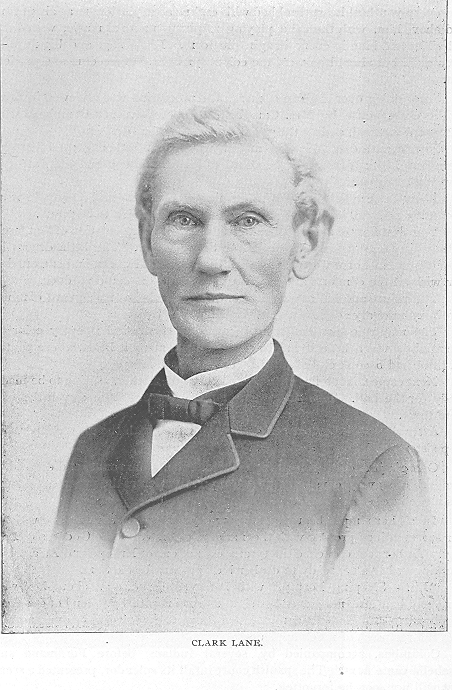
THE CENTENNIAL ANNIVERSARY OF HAMILTON, O. - 49
The feast of the watermelons reminded many a colored man from the south of the happy days in that sunny land.
The last float: of this division was "The Old Woman that Lived in a Shoe." There was the old lady with her antiquainted bonnet and dress to match. About her were her numerous family, playing and fighting and getting into all the mischief that any child could discover.
The next division was headed by some little lords on horseback, and were followed by a massive swan-boat filled with happy excursionists to Woodsdale Island park.
Then there was the noisy, merry, tripping school children, with song and shouts of joy and waving over their heads the flag clear to every American heart.
One hundred years ago tricycles and bicycles were scarcely known, but here they were, decked in the beautiful red, white and blue, and ridden by little boys and girls, the pride of many a mother's heart.
Another swan-boat, with its merry crowd of picnicers with their shouts of joy, as with banners waving, they go forth for a day's outing, recalled many a happy day in the summer just past.
Then came an innumerable bevy of children, with chinese lanterns and flags. Shout after shout went tip as these future patriots, some of them scarcely able to walk, marched along as if already men and women and fully able to appreciate what all this celebration meant.
Another float of this division was that of John Lodder and son. A beautiful queen, surrounded by her attendants, was lost amid a forest of flowers and plants, through the branches of which beamed the three colors so dear to us all.
The next division headed by several hundred Chinese children in their funny littie costumes of every color imaginable. Some were little, some were big, some had long cues some short cues, but all were good representatives of our moon-eyed antipodes.
Then came the girls with their spears, drilled in true-soldier style and in uniforms of red, white and blue, with red Turkish fez. These were well ,drilled, reflecting credit upon whoever taught them the military maneuvers, and were one of the greatest attractions of the parade.
There were school children without end. Every little toddler was in line with his flag and a shout for his country. The forty-four states were each represented by a stanch little patriot.
Led by a band of whistlers came the Japanese with their peculiar crazy-quilt dress and parasols. There could not have been a better representation of the people of the other side of the globethan was this.
The next division was headed by a drum corps of little fellows scarcely big enough to hold their drums, followed by a band of young revolutionary soldiers in full uniform